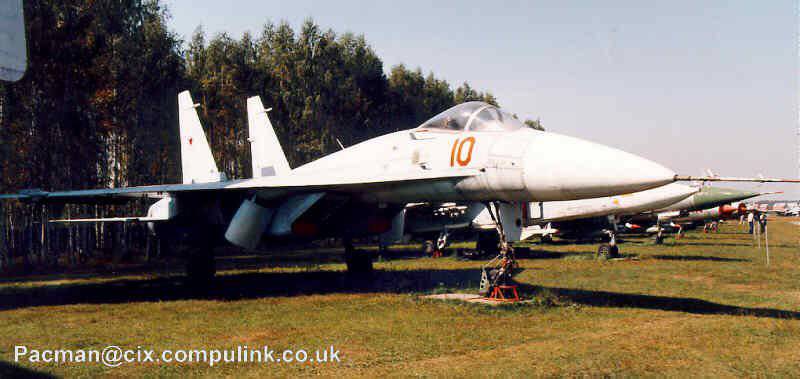Su-27 - one of the best combat aircraft in the world. Part of 1. Birth
The myth of Daedalus and Icarus states that the ancient engineer and designer Daedalus created wings for himself and his son Icarus in order to escape from the island of Crete that was hostile to them. Since the wings were sealed with wax, the father asked his son not to rise high, so that the sun would not damage the structure, but Icarus took flight and died, drowning near the island of Samos in the sea, part of which was later called Ikaria.
In China, the man’s dream of flying was realized through a kite back in the 6 century BC. In Greece, over the 400 years BC, Architekt Terentsky built a flying machine, called the Pigeon, which flew up to 200 meters. And in the 9 century AD, he flew on the prototype of a hang-glider Abbas ibn Farnas - a scientist and engineer from Al-Andalusy.
History aeronautics showed the progressive development of the creation of aircraft heavier than air. The best engineers and designers participated in the construction of aircraft.
Outstanding Russian scientist M.V. Lomonosov in 1754 constructed models that not only rose into the air, but were able to carry a small load. A hundred years later, naval sailor A.M. Mozhaisky introduced a fixed-wing aircraft. A special contribution to the development of Russian aviation belong to N.E. Zhukovsky, founder of the science of aerodynamics, and K.E. Tsiolkovsky, who was the first to establish the dependence of aircraft speed on the shape of the wing.
Before the war, the government, realizing the importance of equipping the army with new aviation technology, did not regret for this purpose neither financial resources nor human resources. These efforts led to a significant breakthrough in the production of metal planes. Aviation equipment was designed for various uses: reconnaissance aircraft, fighters, attack aircraft, bombers.
The aircraft designers of all countries, not only the Soviet Union, faced and still have the urgent task of creating aircraft that can fly faster and higher than all, and also have the simplest and most stable control.
The struggle between the two leading powers of the world to gain superiority in airspace began in 1965, with the start of the development of fourth-generation fighter aircraft by American designers. Its first model, when tested during combat operations in Vietnam, showed that this model, armed with medium-range missiles, was significantly less agile when it came to Soviet MiG-type aircraft. Since the main method of aerial confrontation during the Vietnamese-American military conflict was close combat, the less maneuverable American aircraft often lost air battles. Moreover, possessing still considerable weight and awkwardness, it became a convenient target for ground guns. The creation of Soviet MiG-25, capable of developing the highest speed in the world (up to three thousand kilometers per hour) and a significant ceiling height, forced the Americans to start creating a high-speed and super-maneuverable fighter. The aircraft was given the code name F-15. After the first flight of this aircraft in the 1972 year, it was adopted by the army. The F-15 had a high engine thrust and low wing loading, which made it very manoeuvrable.
Soviet military experts appreciated the new American fighter, which surpassed the aircraft in the Soviet Army Air Force. Before the Soviet designers was the task in the shortest possible time to create a fighter that will be able to take the lead from the F-15.
Practically in parallel with the American developers, Soviet designers from the Sukhoi Design Bureau, having received a government order as a result of a competition held among the leading aviation design organizations of that time, began to create a fourth-generation Soviet fighter. The concept of the aircraft provided increased maneuverability of the aircraft, the ability to fly long-distance, the presence of modern weapons, as well as a completely new sighting and navigation equipment. When planning technical and tactical indicators, the ability of a new fighter model to effectively conduct both close combat and long-range combat using missile weapons. The new model received the designation - T10.

In May, the 1977 prototype of the T-10, later named Su-27, first flew into the sky. Piloted by his honored test-pilot VS Ilyushin. He liked the car, but, according to his confession, it required additional refinement. Although the T-10 was a new type of fighter, it had significant drawbacks in weight, weaponry, electronics and aerodynamics. Experts have confirmed that due to the erroneously selected wing configuration, at the angles of attack from 8 to 10 degrees, a loss of stability of the aircraft and a deterioration in controllability were observed. It was necessary to eliminate all the shortcomings identified during the trial operation. To do this, it was necessary to radically change many elements of the aircraft structure, modify the shape of the wing, install additional equipment.
Everything new is created by trial and error. To some extent this concerns such complex technical products as an airplane. Refinement of the Su-27 according to the comments received as a result of the tests allowed the construction of the best fighter in the world. The following material will be devoted to this issue.

Information